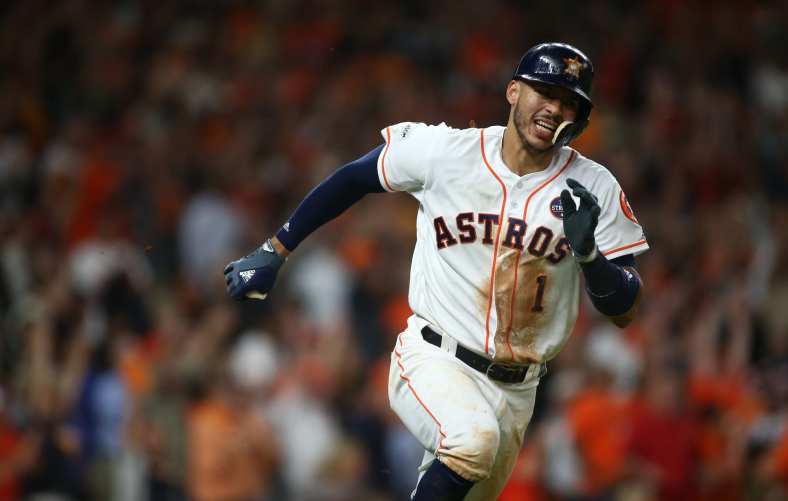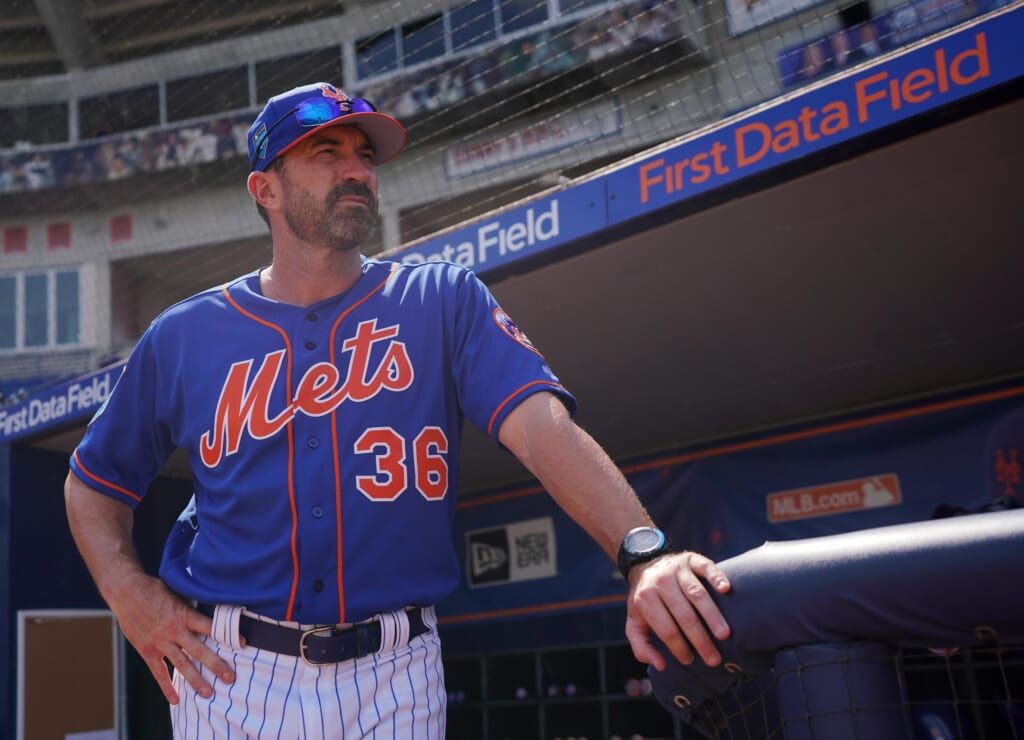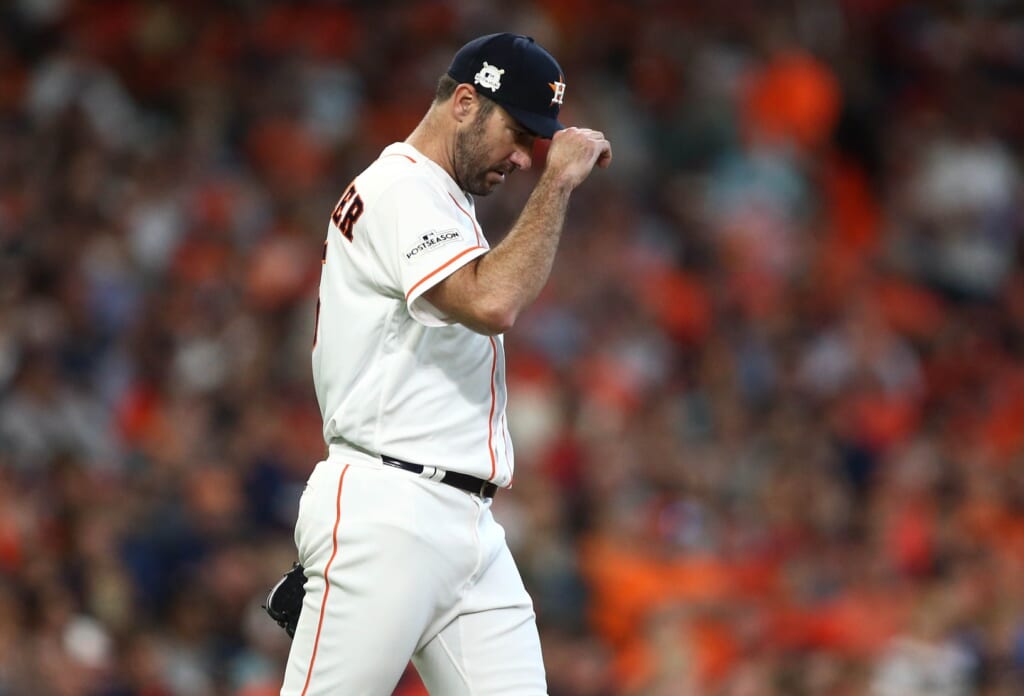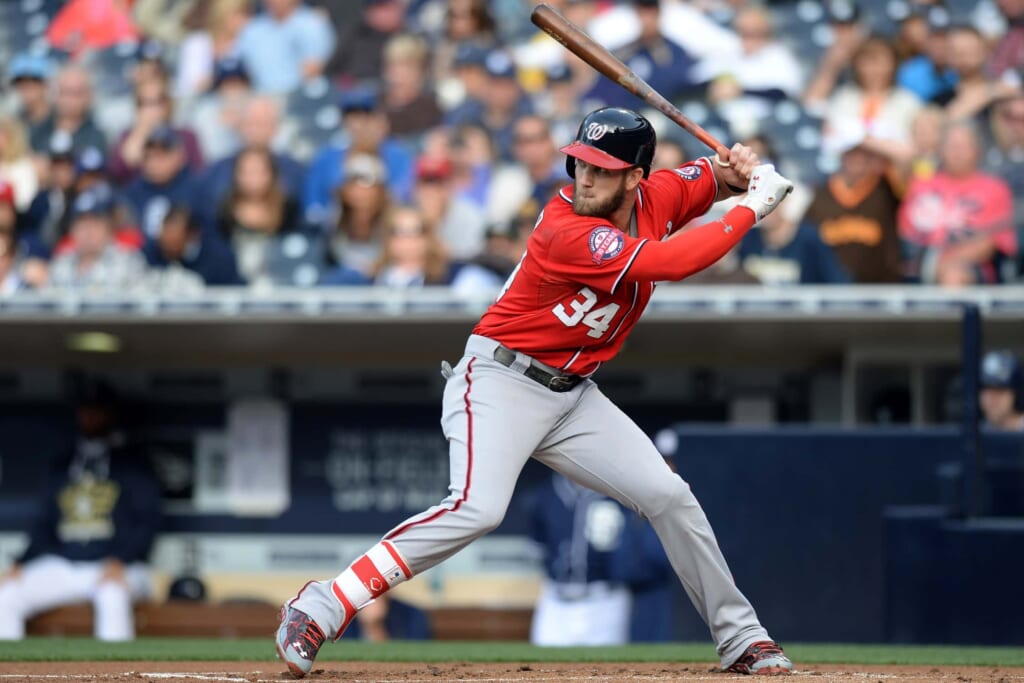
Spring training action is well underway and the regular season less than a month away. It’s time to start thinking about what might happen in the 2018 MLB season and who might take home the hardware for the big awards.
Most of the attention in the Windy City and Big Apple will go to the Chicago Cubs and New York Yankees, respectively. But we expect the awards for baseball’s top managers to go to their crosstown rivals.
The Houston Astros won the World Series in 2017. In 2018, they are well in line to bring home two of the American League’s most prestigious awards.
In the National League, we see a certain slugger from the nation’s capital winning his second MVP and cashing in for an unprecedented and previously unfathomable contract.
Maybe you’re just curious. Maybe you’re thinking of taking a trip to the Nevada desert, say for March Madness, and are thinking of making some investments on the 2018 MLB season. We’ve got you covered either way.
These are the men who will claim baseball’s top individual prizes for the 2018 MLB season.
American League Manager of the Year: Rick Renteria, Chicago White Sox
The White Sox have been down for a while. They haven’t made the playoffs since 2008 and haven’t had a winning season since 2012. But we’re optimistic that Renteria will be the manager to turn things around.
First of all, the Chicago organization is loaded with young talent. A great deal of that talent is going to make its way to the majors in 2018. We were also impressed by what Renteria did with the Cubs in his one year as their skipper. Yes, the Cubs went 73-89 in 2014, which pales in comparison to what they did over the following three seasons under Joe Maddon. But Chicago won only 66 games a year from 2011-2014. Renteria helped get the team heading in the right direction. Even Theo Epstein acknowledged that his firing wasn’t completely fair.
Of course, 73-89 won’t win Manager of the Year. But it’s worth mentioning that not only are the White Sox young and talented, but they’re in a much more reasonable spot than the Cubs were in 2014 under Renteria. The 2014 version of the National League Central had three teams with a winning record and another that had made the playoffs in three of the previous four years. So, while 73-89 wasn’t a great record, the Cubs were fighting an uphill battle.
That’s not really the case with the White Sox in 2018. The 2018 American League Central does have a clear favorite in the Cleveland Indians. But it also two rebuilding teams in the Detroit Tigers and Kansas City Royals, a good (but far from great) team in the Minnesota Twins, and the White Sox.
Expecting the playoffs on Chicago’s South Side is a touch too optimistic for our liking. But we do like the White Sox to break a long string of losing seasons and compete for most of the season. That will position Renteria well for the Manager of the Year.
National League Manager of the Year: Mickey Callaway, New York Mets

The last four National League Manager of the Year Award winners are as follows. Matt Williams of the Washington Nationals (2014), Joe Maddon of the Cubs (2015), Dave Roberts of the Los Angeles Dodgers (2016), and Torey Lovullo of the Arizona Diamondbacks (2017). Each of those men were in their first seasons with those teams. That doesn’t mean that we’re limited to first-year managers, but it’s quite noticeable.
In 2018, the National League has three first year managers: Dave Martinez of the Nationals, Gabe Kapler of the Philadelphia Phillies, and Callaway.
Of the three, Martinez clearly has the best team. We’d normally give that person the inside track. But it’s almost impossible to imagine the Nationals doing something so impressive in the regular season that the manager wins this award. This is a team that’s made the playoffs four times in the last six seasons. It needs to win in the postseason to turn heads. Seeing as how this is a regular season award, even a dominant postseason run to a World Series crown wouldn’t help Martinez.
That leaves Kapler and Callaway.
Really, Callaway gets the nod because at this point because the Mets are simply better than the Phillies. Both teams were fairly active in the offseason and we do expect that both will be better in 2018 than they were in 2017. But the more complete team resides in New York. In fact, we like the Mets to either make the playoffs, or fall just short.
If the two teams finish close in the standings, Kapler has an edge. We just don’t see that happening. Heading into the season, Callaway has a rather sizable advantage on his Philadelphia counterpart.
American League Rookie of the Year: Willie Calhoun, left fielder, Texas Rangers
When projecting a Rookie of the Year, we have to ask ourselves two questions. One, does anyone stand out as a player who can take the league by storm (ie: Aaron Judge in 2017)? It’s worth mentioning that at this point in 2017, Judge didn’t even look like he could be that guy. With that noted, nobody really jumps out as someone who can dominate in 2018. That leads us into question two. Who will reliably get the most playing time?
In the American League, the two names that really stick out are Luis Robert of the White Sox, and Calhoun. Of the two, we like Calhoun’s game more. He hit 31 home runs in Triple-A in 2017, while slashing at .300/.355/.572.
Granted, Robert’s ceiling is probably higher. But he’s also only 20 and has yet to really demonstrate great power. Calhoun is the more refined player. That will serve him better when it comes to winning this award.
In addition to Calhoun and Robert, keep an eye on Oakland Athletics’ lefty A.J. Puk, and Robert’s teammate Michael Kopech. Teams tend to be cautious with pitchers and as such, we’re not sure that the playing time will be there. If Oakland and Chicago take the reigns off, though, both have strong potential.
But Calhoun is a finished product in the minors. That means that he should be in the majors for most, if not all of the season. The opportunity, combined with his skill, makes Calhoun the front runner for this award.
National League Rookie of the Year: Ronald Acuna, outfielder, Atlanta Braves
As far as this award goes, the drawback on Acuna is his age. He just turned 20 in December. That makes Atlanta far more likely to be conservative with his playing time. Understand that. But also understand that essentially every other part of Acuna’s game is a positive — and not a small one.
His Minor League numbers from 2017 are quite noticeable. He slashed at .325/.374/.522, hit 21 home runs and stole 44 bases. But to look at those numbers alone actually shorts Acuna. We have to look at how they came about.
Acuna started the year playing Advanced-A ball. He hit .287/.336/.478 with three home runs and 14 steals in 115 at-bats over 28 games before getting called up to Double-A. There, he took 221 at-bats over 57 games, slashed at .326/.374/.520, hit nine home runs, and stole 19 bases. Acuna finished the year in Triple-A, taking another 221 at-bats over 54 games. He worked his way to a .344/.393/.548 with nine home runs and 11 steals.
So, not only did Acuna put up a strong finishing stat line, but he got better as he progressed through the minors. A big concern with any prospect is that Major League Baseball is much different than Minor League Baseball. Make no mistake, that applies to Acuna. But his continued statistical improvement despite moving up levels of the minors goes a long way in alleviating those concerns.
As if that wasn’t enough, Acuna can play all three outfield positions. Even if he doesn’t head north with the Braves out of spring training, he’s likely to do so early in the year. Once he arrives, his versatility will earn him significant playing time. He’ll earn that playing time at SunTrust Park, a second year stadium that showed itself to be quite hitter friendly in Year 1.
Put all of those factors together and we like Acuna to be the Senior Circuit’s top rookie in 2018.
American League Cy Young: Justin Verlander, starting pitcher, Houston Astros

Verlander controversially missed out on the American League Cy Young Award in 2016. He followed it up with a nice season for the Detroit Tigers in 2017. But with a 3.82 ERA and 1.28 WHIP over the first five months of the season, he was well out of Cy Young contention. Then he was traded. And in his final five regular season starts, Verlander lowered his ERA and WHIP to 3.36 and 1.18, respectively.
Getting traded to Houston did wonders for Verlander. Between the regular season and playoffs, Verlander appeared in 11 games (10 starts) for the Astros. He posted a 1.66 ERA, 0.74 WHIP, and struck out 10.3 hitters per nine innings. For you old-school fans out there, he also posted a cool 9-1 record.
Now, we can hear the naysayers pointing out that 11 appearances is roughly one-third of what a healthy Verlander will make during the regular season. The small sample size is always something be concerned about. We respect that. But we also can’t help but wonder if maybe a future Hall of Famer with nothing to prove got a little bored (for lack of a better phrase) while pitching for a non-contending Detroit team. After all, the Tigers were competitive in 2016 and Verlander had a stellar year. When he went to a contender in 2017, his game was significantly elevated.
We’re taking our chances that Verlander will be stellar for another full season while pitching for a contender. He goes deep into games and, pitching for a good team, will have a strong win-loss record. That will please the older voters. Meanwhile, his ERA, WHIP, and strong strikeout rate will draw the votes of the younger crowd. Chris Sale and Corey Kluber will offer stiff competition. But we’re looking at Verlander to put another notch on his Hall of Fame resume.
National League Cy Young: Noah Syndergaard, starting pitcher, New York Mets
There’s simply no doubting Syndergaard’s talent. He has a career K/9 rate of 10.3, with a BB/9 rate of 1.9. That’s an absolutely absurd combination for anyone. For a 25-year-old, it’s nearly unfair.
After a 2017 campaign that saw Thor throw only 30.1 innings over seven starts, we understand that some concern might exist about his health. But thus far in the spring, Syndergaard’s arm strength has been fine. Spring results can be overrated for pitchers, but Syndergaard has routinely clocked in at over 100. That’s not overrated, as it shows that his arm strength is already back.
Thor’s bread and butter is the heater. But he’s also capable of working down in the strike zone. That, combined with a fastball that most hitters can’t catch, makes Syndergaard a nightmare on opposing offenses.
The National League features many great pitchers. Washington’s Max Scherzer has won this award in each of the last two seasons. Clayton Kershaw is always a threat. Scherzer’s teammate Stephen Strasburg, Arizona’s Zack Greinke, and San Francisco Giants lefty Madison Bumgarner must be considered.
But Scherzer is 33. Greinke is 34. Kershaw is only 30 while Strasburg is a year younger, but both have a rather significant injury history. Bumgarner missed most of 2017 and while that was a freak injury, his regular season numbers have generally been very good, but not quite up to his postseason standards. So, while Syndergaard has some concerns, most of the other big name pitchers in the National League do, as well.
He’s 25 and is really just entering his prime. That’s scary when we consider how good Thor has already been. We expect that he’ll be adding a trophy to his case after the season.
American League MVP: Carlos Correa, shortstop, Houston Astros
Correa finished 17th in MVP voting in 2017, and that was despite playing in only 109 games. His numbers were just that good.
Now, if Correa had played in 155 games and produced at the same rate that he did in 109, he would have scored 117 runs, hit 34 home runs, drove in 119, and slashed at .315/.391/.550. He would have done all of that while playing shortstop on a team that won 101 games. Jose Altuve had a great year. But if Correa had stayed healthy, there’s a decent chance that he would have wrestled the MVP away from his double-play partner.
Of course, 2017’s numbers don’t mean anything in 2018. But Correa’s numbers have generally gotten better as his MLB career has gone on. That’s scary for opposing teams to think about, given that Correa is only 23. Batting right in the heart of one of baseball’s best lineups and playing home games in a hitter’s park, there’s every reason to believe that Correa’s improvement will continue.
The Junior Circuit does not lack great players and, in turn, it does not lack MVP candidates. Correa will have to wade through a deep field. But he has the all around game to do just that.
National League MVP: Bryce Harper, right fielder, Washington Nationals

Harper has been around for so long that it can be hard to forget this, but he’s only 25. As good as he is, there’s still a lot of time to improve.
Harper was similar to Correa in that his 2017 season was shortened due to an injury. But in 111 games, he scored 95 runs, hit 29 home runs, drove in 87, slashed at .319/.413/.595, and finished 12th in National League MVP voting. Extrapolated out to 155 games, those numbers come out to 133 runs scored, 40 homers, 120 RBI, and the same slash line. That probably would have won the NL MVP, even against Giancarlo Stanton’s 59 home run season.
Now, Stanton is out of the National League. And while the Senior Circuit still has its share of great players, it’s hard to look beyond Harper as the league’s best. Injuries have been an occasional plague but when he’s been on the field, he’s exceled and constantly gotten better.
If all of that wasn’t enough, there’s one more thing to consider. Harper is in his contract year. With a good year, it’s not at all unrealistic to think that he’ll sign a contract worth close to (or even more than) $500 million. Harper has always played hard. But we’re not exactly worried about incentive.
Throw in the fact that he also plays on a perennial contender and we have a natural MVP choice.